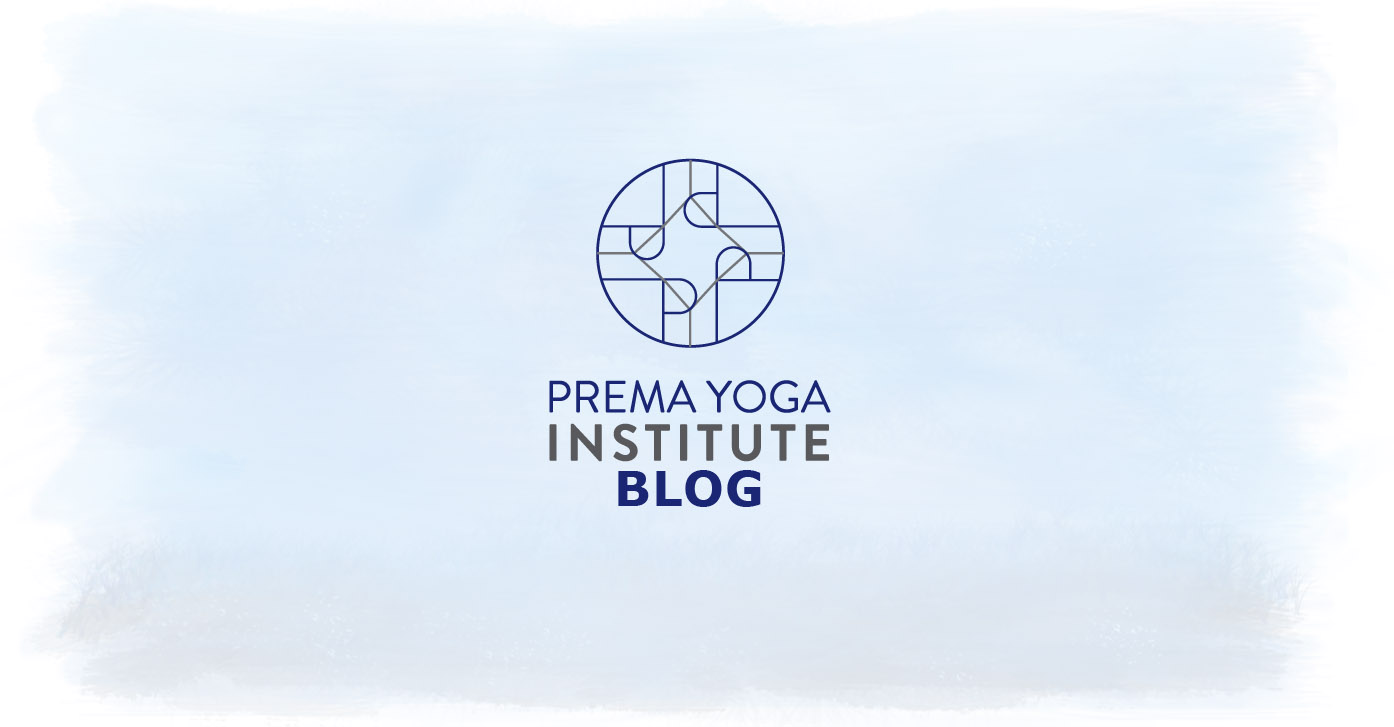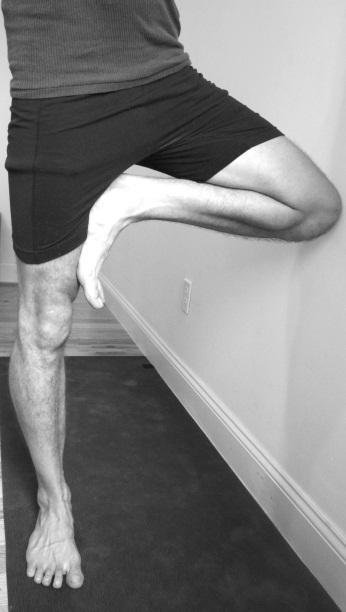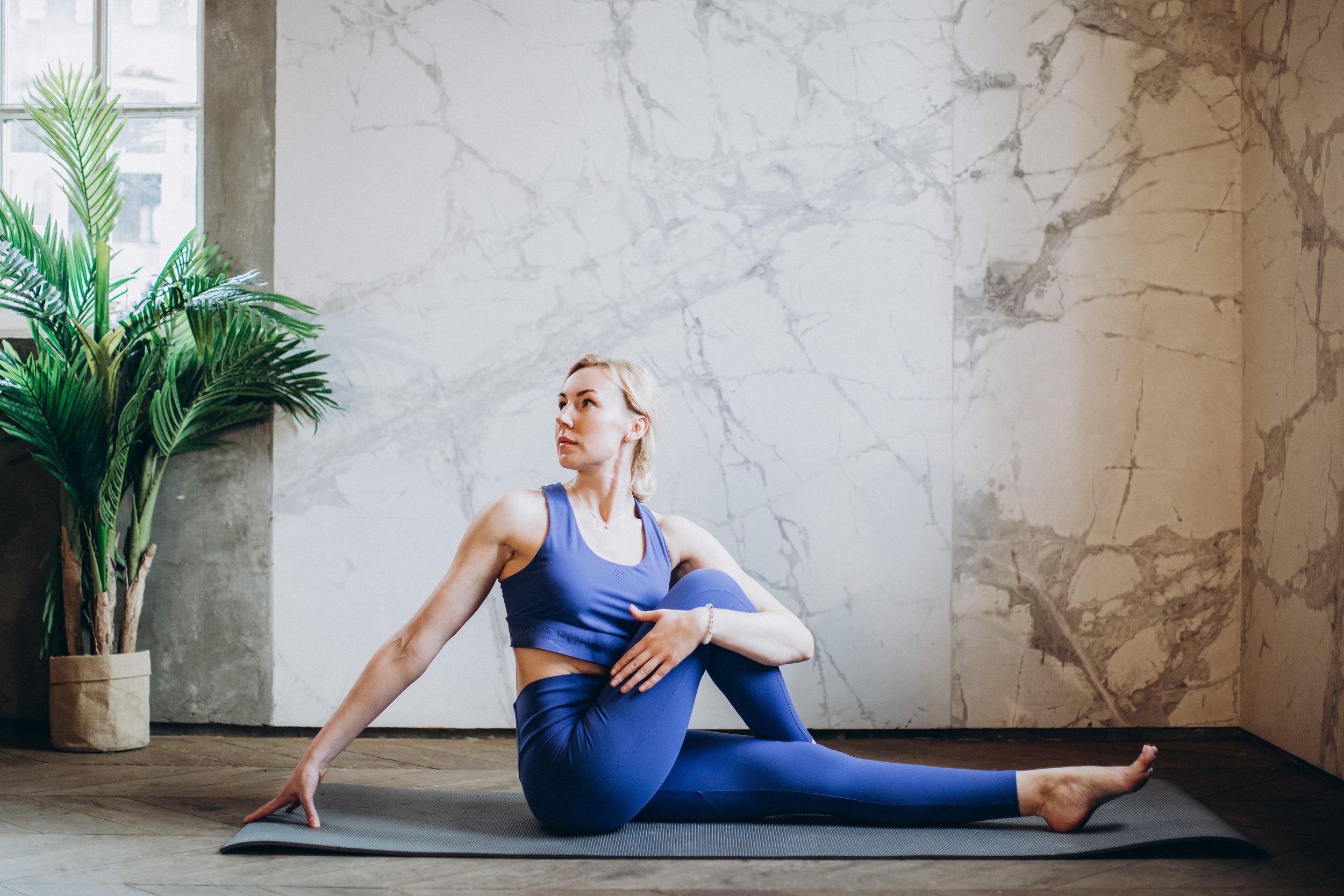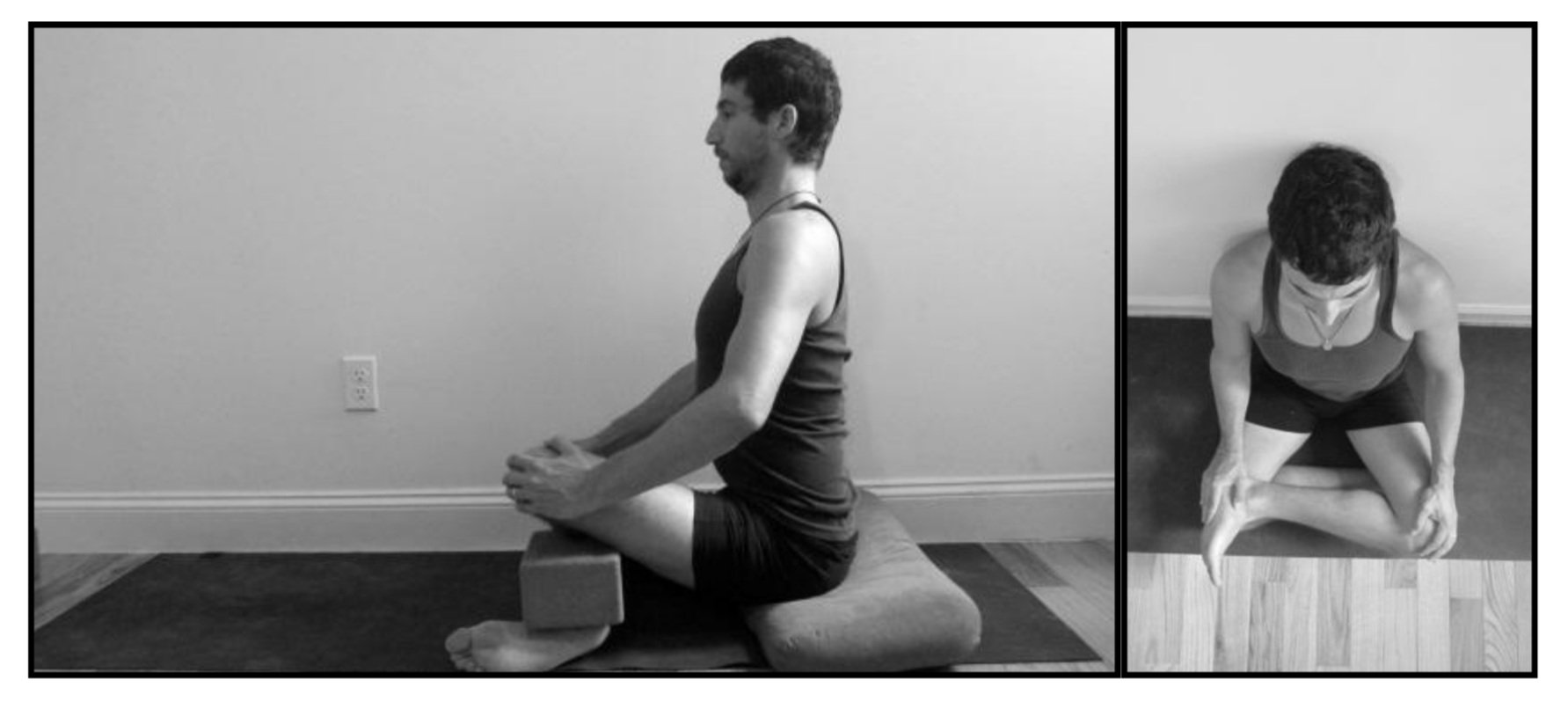
Introduction to Therapeutic Yoga for the Feet
Our feet and ankles play a vital role in our daily lives, supporting our body weight and allowing us to move with grace and ease. But, for many of us, the health and functionality of our feet are compromised due to factors like poor biomechanics, obesity, or the habitual use of high heels. These issues can lead to limitations in our yoga practice and even result in conditions such as peripheral neuropathy, plantar fasciitis, osteoarthritis, and bunions.
In this article, we will explore the importance of maintaining healthy feet and how therapeutic yoga can help address these challenges.
The Importance of Healthy Feet in Yoga
Before teaching yoga, instructors must first understand the biomechanics of the feet and ankles. The average person often has deficiencies in both strength and flexibility in these areas, leading to issues like poor balance and compromised poses.
Warrior 1-2 and Trikoṇāsana are examples of yoga poses that can reveal limitations in the feet and ankles. These limitations can hinder the proper execution of these asanas and may lead to tendonitis or other discomforts. It’s essential to address these limitations and help practitioners regain their foot and ankle flexibility.
The Anatomy of Foot Movement
The human foot and ankle are marvels of engineering, comprising 28 bones and 25 joints that allow for a wide range of motion. To facilitate this movement, various muscle groups come into play, responsible for actions such as dorsiflexion, plantarflexion, inversion (adduction), and eversion (abduction). These movements are essential for maintaining balance and mobility in yoga and daily activities.
One of the key takeaways here is that the health of our feet goes beyond aesthetics; it affects our overall physical well-being. This is where therapeutic yoga can make a significant impact by addressing limitations and promoting flexibility and strength in the feet.
Common Foot Conditions and How Yoga Helps
Peripheral Neuropathy. Peripheral neuropathy, often associated with diabetes, can cause numbness, tingling, and balance issues. Yoga, combined with specific foot exercises, can alleviate chronic symptoms by improving circulation and nerve function.
Plantar Fasciitis. This painful condition involves inflammation in the plantar fascia ligament on the underside of the foot. Yoga can help by stretching and strengthening the muscles and tissues in the feet, reducing tension on the plantar fascia.
Osteoarthritis of the Feet. Age and wear and tear can lead to joint pain and deformities in the feet. Yoga poses that encourage joint mobility and strength can provide relief and improve overall foot health.
Bunions (Hallux Valgus). Bunions can be caused by heredity or ill-fitting footwear and may result in pain and deformity of the big toe. Yoga can help by improving toe flexibility and strengthening the muscles that support the arch of the foot.
Yoga Poses for Foot Health
Vīrabhadrāsana I-II (Warrior 1-2)
These poses build balance, strength, and flexibility in the feet while challenging your body.
Utthita Trikoṇāsana (Extended Triangle)
This pose demands flexibility through the entire body, making it an excellent choice for improving overall foot health.
Vṛksāsana (Tree Pose)
Balancing poses with the support of a wall can help train proper balance on one foot, enhancing foot stability.
Bālāsana (Child’s Pose)
Child’s Pose can be more challenging for those with foot, ankle, or knee issues. Using props like blankets can make this pose accessible and beneficial.
Supta Pādāṅguṣṭhāsana (Reclined Extended Leg Pose) with Strap
This non-weight-bearing pose is great for restoring balance to the feet and improving flexibility.
Additional Exercises for Foot Health
Interlacing fingers between toes to improve toe alignment.
Using a ball to roll and release tension in the feet, aiding in conditions like plantar fasciitis and bunions.
Calf stretches to restore strength and flexibility to the feet and correct poor posture.
Foot circles, pointing, and flexing exercises to test and improve foot and ankle mobility.
The Bottom Line
Incorporating therapeutic yoga practices into your daily routine can have a significant impact on the health and functionality of your feet. Beyond enhancing your yoga practice, it can also alleviate common foot conditions and improve your overall well-being.
Aspiring yoga instructors and those seeking yoga accreditation should consider the importance of foot health and its connection to the rest of the body. By nurturing our feet, we can take significant steps toward a healthier, more balanced life. Whether you aim to become a yoga instructor or simply want to enjoy a pain-free yoga practice, remember that a solid foundation starts with healthy feet.
Are you a yoga teacher ready to take your teaching to the next level? Discover slow flow yoga and more in our annual training Prema Therapeutics Essentials with Jon Witt, C-IAYT, Dana Slamp, C-IAYT, Dr. Loren Fishman and more. This 100-hour online course counts towards a RYT 500 Teacher Training with Yoga Alliance AND your Yoga Therapy Certification with IAYT simultaneously. Call us at Prema Yoga Institute and advance your yoga teaching career today!
About Jon Witt
Jon Witt is a certified Yoga Therapist and Teacher and the co-lead faculty of Prema Yoga Therapeutics Essentials at PYI. He's a C-IAYT and E-RYT500-certified Senior Therapeutics Teacher, trained in Atmavikas Yoga Therapy in India and transitioned to yoga after a decade in competitive wrestling. Jon is a former Pure Yoga instructor in Hong Kong and has studied with renowned teachers like Dharma Mittra, Anthony Carlisi, and Baron Baptiste. Jon now teaches various styles including Yoga Therapy and Vinyasa in New York.
Introduction to Therapeutic Yoga for the Hips
Have you ever considered how the alignment of your pelvis impacts your overall health and mobility? This question is particularly relevant for those aspiring to become yoga instructors or those interested in yoga accreditation. Understanding the pelvic structure and its functions is crucial for effective yoga practice. After all, the hip and pelvis, with their unique composition of bones, connect the lower extremities to the spine’s base (sacrum), enabling upright stance and free movement.
The Consequences of Pelvic Misalignment
Pelvic misalignment can cause body imbalances, affecting movements like walking and running. This misalignment, often seen in older adults, leads to poor mechanics and harmful compensatory movements, potentially resulting in hip or knee replacements.
Understanding the Causes of Pelvic Issues
But, why does this happen? Pelvic issues often arise from aging, but premature dysfunction in middle-aged individuals is concerning. It can stem from loss of muscle around the pelvis or tight supporting muscles, causing compensatory movements and leading to conditions like arthritis, and sometimes necessitating joint replacement.
The Role of Yoga in Promoting Hip Mobility
Most individuals, except those regularly practicing yoga, dancing, or martial arts, do not move their hips through their full range of motion, including flexion, extension, and rotations. This lack of movement can lead to the issues mentioned earlier. However, there are yoga poses that can significantly improve hip and pelvis health, ensuring flexibility and preventing future complications.
Yoga Poses for Hip and Pelvis Health
The health of our hips and pelvis is vital for mobility, stability, and overall well-being. Yoga offers a range of poses specifically designed to enhance the flexibility, strength, and alignment of these crucial areas. Whether you’re a seasoned practitioner or new to yoga, incorporating these poses into your routine can greatly improve hip and pelvic health, offering relief from discomfort and preventing future injuries.
Supta Kapotāsana (Reclined Ankle to Knee/Reclined Pigeon)
Ideal for those who cannot perform a full pigeon pose due to limitations in hip movement.
This pose mobilizes the hip with external rotation, offering a productive variation for those recovering from hip or knee surgery.
Aim to create a 90-degree angle in both legs if possible, and use props to support the hips, lower back, and head for comfort and alignment.
This pose is also a preparatory step for more advanced poses like the Pigeon. Incorporate Warrior 1, 2, and Triangle poses to gauge readiness for Pigeon.
It’s particularly beneficial in restoring health to the lower back and alleviating sciatica.
Swastikāsana (Ankle to Knee/Double Pigeon)
Offers similar benefits in restoring hip mobility as seen in Pigeon and Cow Face poses.
Focuses on teaching external rotation in both hips without imposing rotation on the knees.
Use props under the hips and possibly the knees to ensure proper alignment and reduce strain.
When more demanding poses like Pigeon are not feasible, opt for the Easy-Seated Pose (Sukhāsana) with appropriate props.
Gomukāsana (Cow Face)
A more complex pose that involves stacking the knees while maintaining alignment in the upper body.
Prop the hips with a blanket or bolster to enhance efficiency and safety in the pose.
Effective in releasing the piriformis muscle, thus helping relieve sciatic pain in hips and legs.
This pose can be adapted for chair yoga or performed in a reclined position, starting with one leg straight and the other bent, stacked on the bottom knee.
Supta Pādāṅguṣṭhāsana Variation (Reclined Stretch with Strap)
A good alternative when hip opening poses are not suitable.
Focuses on releasing the calf and hamstrings, thus restoring health to the lower back.
This pose also brings traction into the neck, helping to restore head and neck alignment.
It’s an excellent alternative to more strenuous poses like the plow or shoulder-stand.
Viparītakaraṇī (Legs up the Wall Pose)
Excellent for releasing tension in the legs, hips, and back.
Prop the hips if there’s a gap between the hips and floor to maintain natural spinal curves.
Ideal for individuals who cannot perform forward bends while standing or on the ground.
This pose can be used as an alternative to more challenging inversions, especially when the hips are propped higher than the heart.
By incorporating these specific poses into a yoga routine, individuals can significantly improve their hip and pelvic health. These poses are not only beneficial for aspiring yoga instructors but also for anyone looking to enhance their physical well-being through yoga. Understanding and practicing these poses can be a vital component of yoga instructor training, particularly for those seeking yoga accreditation and aiming to become well-rounded yoga instructors.
The Bottom Line
Therapeutic yoga for the hips is crucial for overall health and mobility. It addresses issues like stiffness and pain, often stemming from sedentary lifestyles or aging. These practices provide a natural approach to improving hip flexibility and function, emphasizing proactive care for long-term well-being.
Whether you’re looking for relief from discomfort or if you’re aiming to enhance your physical capabilities, incorporating these therapeutic yoga practices into your daily routines can lead to significant improvements in hip health and, by extension, your overall quality of life.
Are you a yoga teacher ready to take your teaching to the next level? Discover slow flow yoga and more in our annual training Prema Therapeutics Essentials with Jon Witt, C-IAYT, Dana Slamp, C-IAYT, Dr. Loren Fishman and more. This 100-hour online course counts towards a RYT 500 Teacher Training with Yoga Alliance AND your Yoga Therapy Certification with IAYT simultaneously. Call us at Prema Yoga Institute and advance your yoga teaching career today!
About Jon Witt
Jon Witt is a certified Yoga Therapist and Teacher and the co-lead faculty of Prema Yoga Therapeutics Essentials at PYI. He's a C-IAYT and E-RYT500-certified Senior Therapeutics Teacher, trained in Atmavikas Yoga Therapy in India and transitioned to yoga after a decade in competitive wrestling. Jon is a former Pure Yoga instructor in Hong Kong and has studied with renowned teachers like Dharma Mittra, Anthony Carlisi, and Baron Baptiste. Jon now teaches various styles including Yoga Therapy and Vinyasa in New York.
The Physiological Necessities for Warm-Ups in Yoga
Yoga is not just about striking a pose; it’s a holistic practice that involves mindfulness, breath control, and understanding the physiological aspects of the body. One crucial aspect of yoga practice is the warm-up phase, which often gets overlooked.
In this article, we will explore the physiological necessities for warm-ups in yoga, emphasizing the importance of gradual stretching, movement, and mindfulness in yoga. Additionally, we'll provide valuable yoga practice tips to enhance your warm-up routine and overall yoga experience.
The Spinal Cord-Muscle Relationship: A Lesson in Gradual Stretching
Yoga is about the intricate connection between our bodies and minds. The relationship between the spinal cord and muscles is a prime example of this connection. The muscle spindle, located within the muscle, plays a critical role in resisting sudden stretching. When the length or tension in a muscle changes abruptly, the spindle signals the spinal cord, which, in turn, instructs the muscle to contract.
To prevent this natural muscle contraction, it is imperative to incorporate gradual stretching into our practice. Slow movement allows the muscles to adapt and lengthen without resistance. Neglecting this gradual approach can not only limit your range of motion but also increase the risk of injury, including muscle tears and connective tissue strains or tears.
One example is the hamstrings. If a class begins with static stretching, the muscle spindle will simply inhibit muscle release. Instead, incorporate slow dynamic stretches, such as this mini-sequence:
Cat/cows and establishing ujayi breath
Bring one foot forward into a runner’s lunge with the hand on blocks
Inhale lengthen the leg
Exhale bend back to runner’s lunge
Repeat 4-6 times, lengthening the leg and the breath with every slow repetition
If holding any postures involving stretching in the warm-up, be sure they are mindful, simple and slow to encourage interoception – our ability to perceive what is happening inside our body. So in the case of the hamstrings – after the slow flow warmup described above - one could teach or practice Uttanāsana with well-bent knees – bringing the yoga practitioner’s thoughts to the breath and feeling of this introspective pose.
The phrase “listen to the body” is prevalent in yoga asana classes for a reason - that listening is one experience of the union of mind and body.
For a more in-depth understanding of this process, I highly recommend reading Ray Long’s insightful blog post on the subject.
The Role of Synovial Fluid in Joint Health
Another crucial aspect of yoga warm-ups is the role they play in joint health. Synovial fluid, a vital component for joint lubrication, is released into the joint only when there is movement. Synovial joints, like the hip, are surrounded by a capsule lined with synovial membrane (synovium). Within the synovium, fibroblasts secrete synovial fluid, which lubricates joint surfaces, reduces friction, and acts as a shock absorber.
Additionally, synovial fluid carries oxygen and nutrients to the articular cartilage while removing carbon dioxide. Macrophage cells in the synovium clear debris and unwanted material from the joint space. Activities that maintain joint range of motion facilitate the circulation of synovial fluid and help clear unwanted substances.
Therefore, moderate joint movement is not only essential to prevent injury but also integral to joint repair. The key is to find a healthy range of motion that does not cause inflammation, ensuring the longevity of your practice.
Now, you might wonder how this connects to your yoga warm-up. Well, it's all about maintaining that precious range of motion. When you engage in activities that gently mobilize your joints, you’re effectively facilitating the circulation of synovial fluid and helping clear any unwelcome substances. It's not just about injury prevention; it’s integral to joint repair and longevity.
So, remember that as you embark on your yoga journey and warm up your body, you’re not only preparing for your practice but also nurturing the health and resilience of your joints.
Are you a yoga teacher ready to take your teaching to the next level? Discover slow flow yoga and more in our annual training Prema Therapeutics Essentials. This 100-hour online course counts towards a 500RYT with Yoga Alliance AND your Yoga Therapy Certification with IAYT simultaneously. Can out Prema Yoga Institute and advance your yoga teaching career today!

































